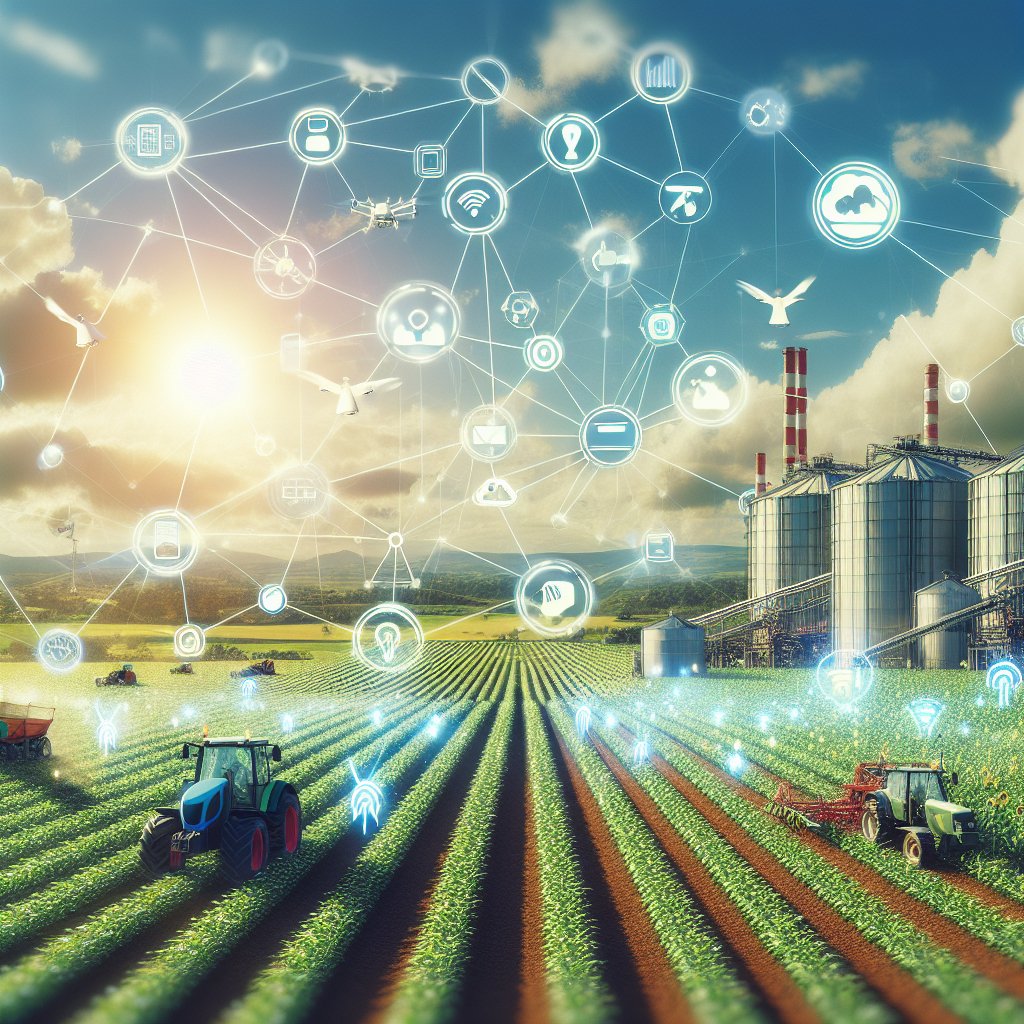The Internet of Things (IoT) is revolutionizing agriculture by connecting the farm of the future. This technological advancement is transforming traditional farming practices into a more efficient, productive, and sustainable system. By integrating IoT devices and sensors, farmers can monitor and manage their crops and livestock in real-time, leading to better decision-making and resource management.
Understanding IoT in Agriculture
IoT in agriculture involves the use of interconnected devices and sensors to collect and analyze data from various farming operations. These devices can be installed in fields, greenhouses, and livestock areas to monitor environmental conditions, soil moisture, crop health, and animal behavior. The data collected is then transmitted to a central system where it can be analyzed and used to make informed decisions.
Components of IoT in Agriculture
Several key components make up an IoT system in agriculture:
- Sensors: These devices measure various parameters such as soil moisture, temperature, humidity, and light intensity. They provide real-time data that helps farmers understand the current state of their crops and environment.
- Connectivity: IoT devices use various communication technologies such as Wi-Fi, Bluetooth, and cellular networks to transmit data to a central system. This connectivity ensures that data is continuously updated and accessible from anywhere.
- Data Analytics: Advanced algorithms and machine learning techniques are used to analyze the collected data. This analysis helps in predicting crop yields, identifying potential issues, and optimizing resource usage.
- Automation: IoT systems can automate various farming tasks such as irrigation, fertilization, and pest control. This automation reduces labor costs and ensures that resources are used efficiently.
Benefits of IoT in Agriculture
The integration of IoT in agriculture offers numerous benefits that enhance productivity, sustainability, and profitability.
Improved Crop Management
IoT devices provide real-time data on soil conditions, weather patterns, and crop health. This information allows farmers to make precise decisions about irrigation, fertilization, and pest control. For example, soil moisture sensors can trigger automated irrigation systems to water crops only when necessary, reducing water wastage and ensuring optimal growth conditions.
Enhanced Livestock Monitoring
IoT technology is also beneficial for livestock management. Wearable sensors can monitor the health and behavior of animals, providing data on their activity levels, feeding patterns, and overall well-being. This information helps farmers detect early signs of illness, optimize feeding schedules, and improve animal welfare.
Resource Optimization
By collecting and analyzing data on resource usage, IoT systems help farmers optimize the use of water, fertilizers, and energy. This optimization not only reduces costs but also minimizes the environmental impact of farming practices. For instance, precision agriculture techniques enabled by IoT can reduce the over-application of fertilizers, preventing soil degradation and water pollution.
Increased Productivity and Profitability
With better data and automation, farmers can increase their productivity and profitability. IoT systems enable more efficient use of resources, reduce labor costs, and improve crop yields. Additionally, predictive analytics can help farmers plan their planting and harvesting schedules more effectively, ensuring that they meet market demands and maximize their profits.
Challenges and Future Prospects
While IoT in agriculture offers significant benefits, there are also challenges that need to be addressed to fully realize its potential.
Data Security and Privacy
The collection and transmission of large amounts of data raise concerns about data security and privacy. Farmers need to ensure that their data is protected from cyber threats and unauthorized access. Implementing robust security measures and adhering to data privacy regulations are essential to address these concerns.
Infrastructure and Connectivity
Reliable internet connectivity is crucial for the effective functioning of IoT systems. In many rural areas, internet infrastructure may be lacking or unreliable, posing a challenge for the widespread adoption of IoT in agriculture. Investments in improving rural connectivity are necessary to overcome this barrier.
Cost and Accessibility
The initial cost of implementing IoT systems can be high, making it difficult for small-scale farmers to adopt this technology. However, as the technology matures and becomes more affordable, it is expected that more farmers will be able to access and benefit from IoT solutions.
Future Prospects
The future of IoT in agriculture looks promising, with ongoing advancements in technology and increasing awareness of its benefits. As more farmers adopt IoT systems, the agricultural industry will continue to evolve towards more sustainable and efficient practices. Innovations such as blockchain technology for supply chain transparency, AI-driven predictive analytics, and advanced robotics for automated farming tasks are expected to further enhance the capabilities of IoT in agriculture.
In conclusion, the Internet of Things is transforming agriculture by connecting the farm of the future. Through the integration of sensors, connectivity, data analytics, and automation, IoT systems offer numerous benefits, including improved crop management, enhanced livestock monitoring, resource optimization, and increased productivity. While challenges such as data security, infrastructure, and cost need to be addressed, the future prospects of IoT in agriculture are bright, promising a more sustainable and efficient agricultural industry.










